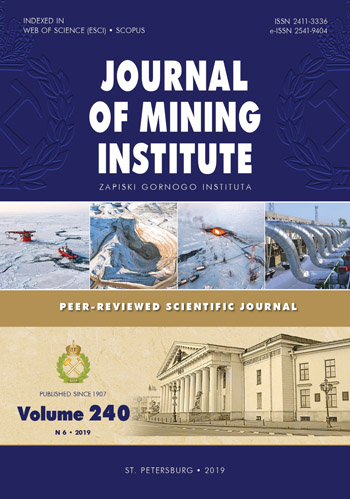On flood protection measures for potash mines
- 1 — Perm Federal Research Center of Ural Branch of Russian Academy of Science
- 2 — Mining Institute of the Ural Branch Russian Academy of Sciences
Abstract
Development of water-soluble ore deposits is associated with the necessity to preserve water blocking strata (WBS), which separate aquifers from the mine gob. One indicator of the rate of man-induced load on WBS layers is subsidence of the earth surface, which defines the character of shift trough formation of the earth surface. The greatest threat of WBS discontinuity is posed by the areas located at the edges of a shift trough. From the perspective of Upper Kama deposit of potassium and magnesium salts, by means of mathematical modelling methods authors demonstrated that in the capacity of threat indicators of WBS hole destruction it is possible to use the following parameters of a shift trough: edge length scaled to the depth of mining operations and maximum subsidence of the earth surface. Critical combination of these factors is responsible for the discontinuity at the edges of water blocking strata. These parameters of a shift trough can easily be controlled by instrumental procedures and can be included in the basics of a general monitoring system of WBS state at potash mines. In order to protect the mine from the inrush of fresh water, it is necessary to form softening zones at the edges of mined-out areas near permanent or temporary borders of mining operations. Authors review different options of softening zone formation. Numerical tests have demonstrated that the most efficient way to protect water blocking strata is the formation of softening zones by means of backfilling the stopes of the workable seam or its exclusion from mining operations.
